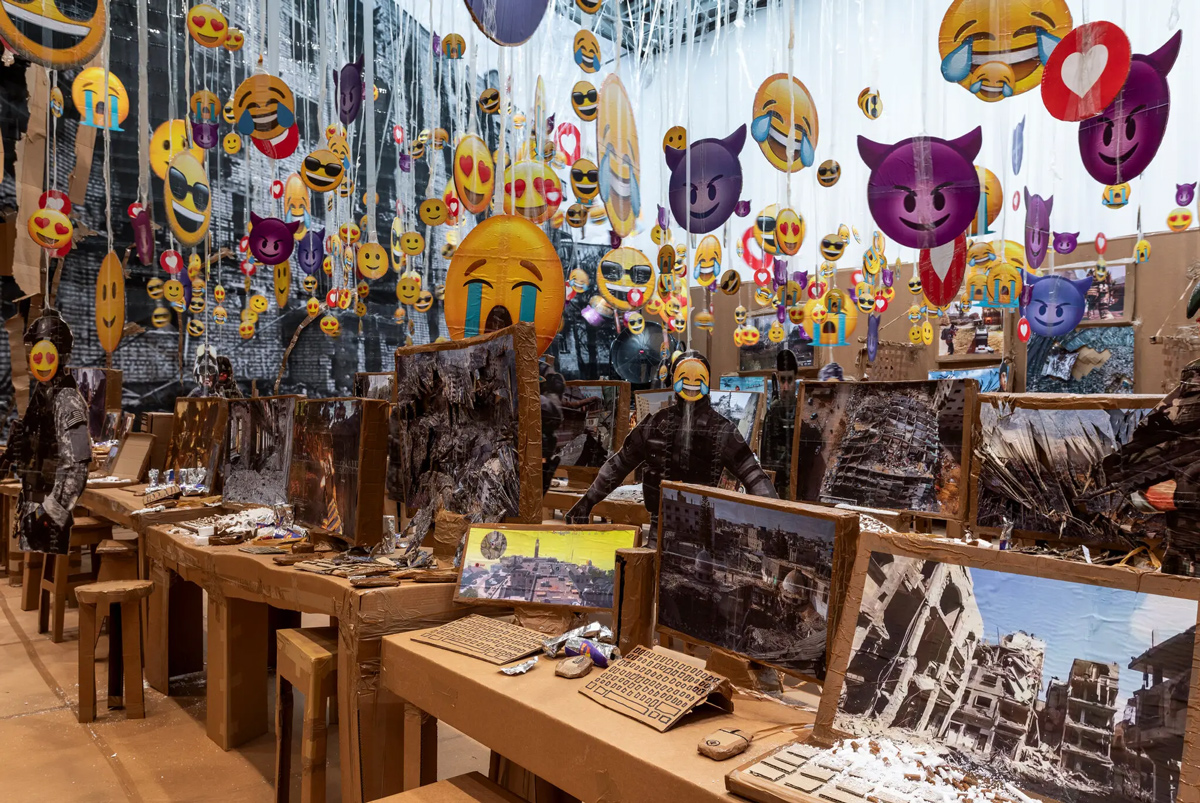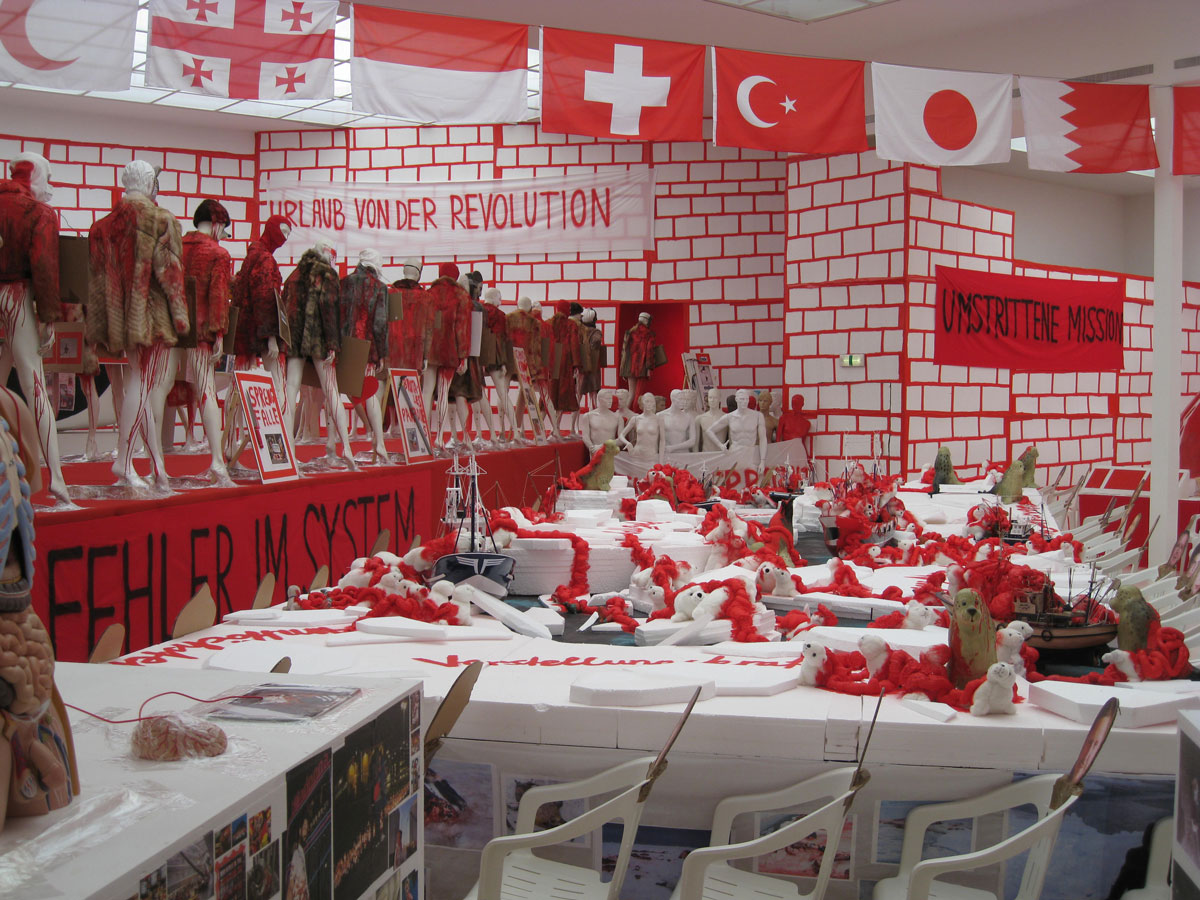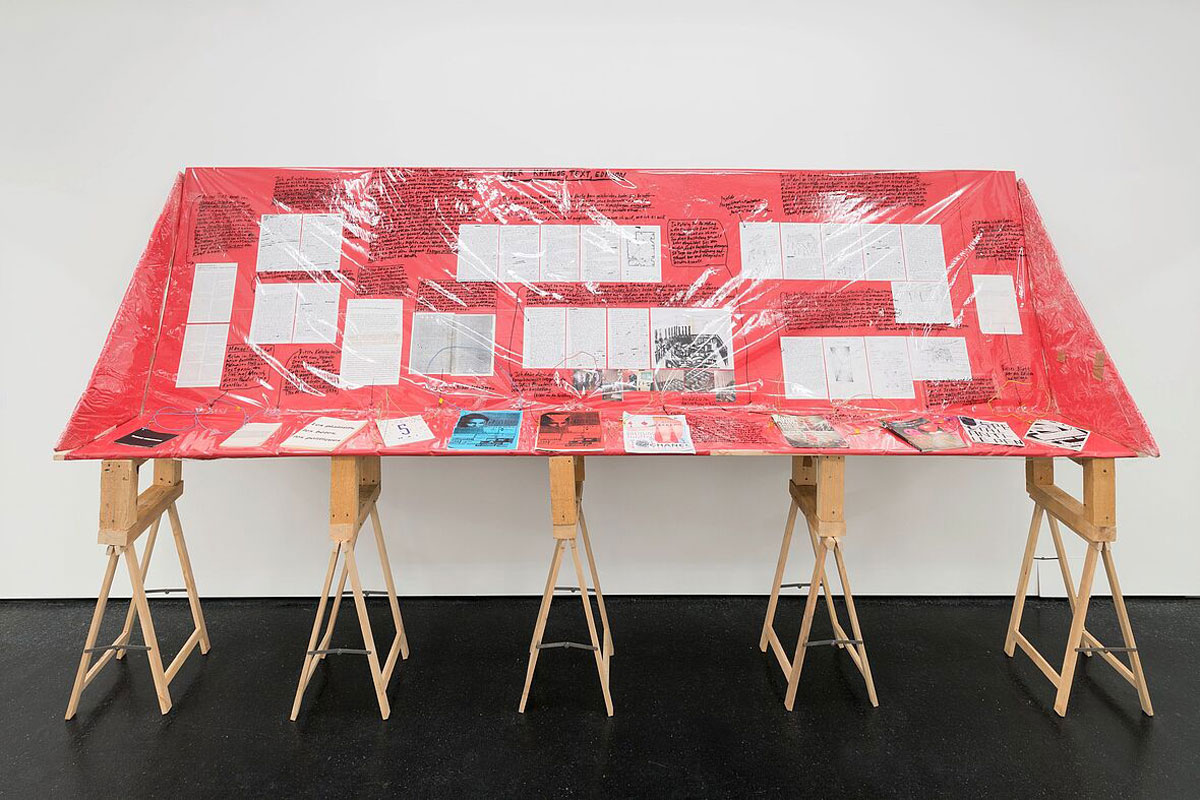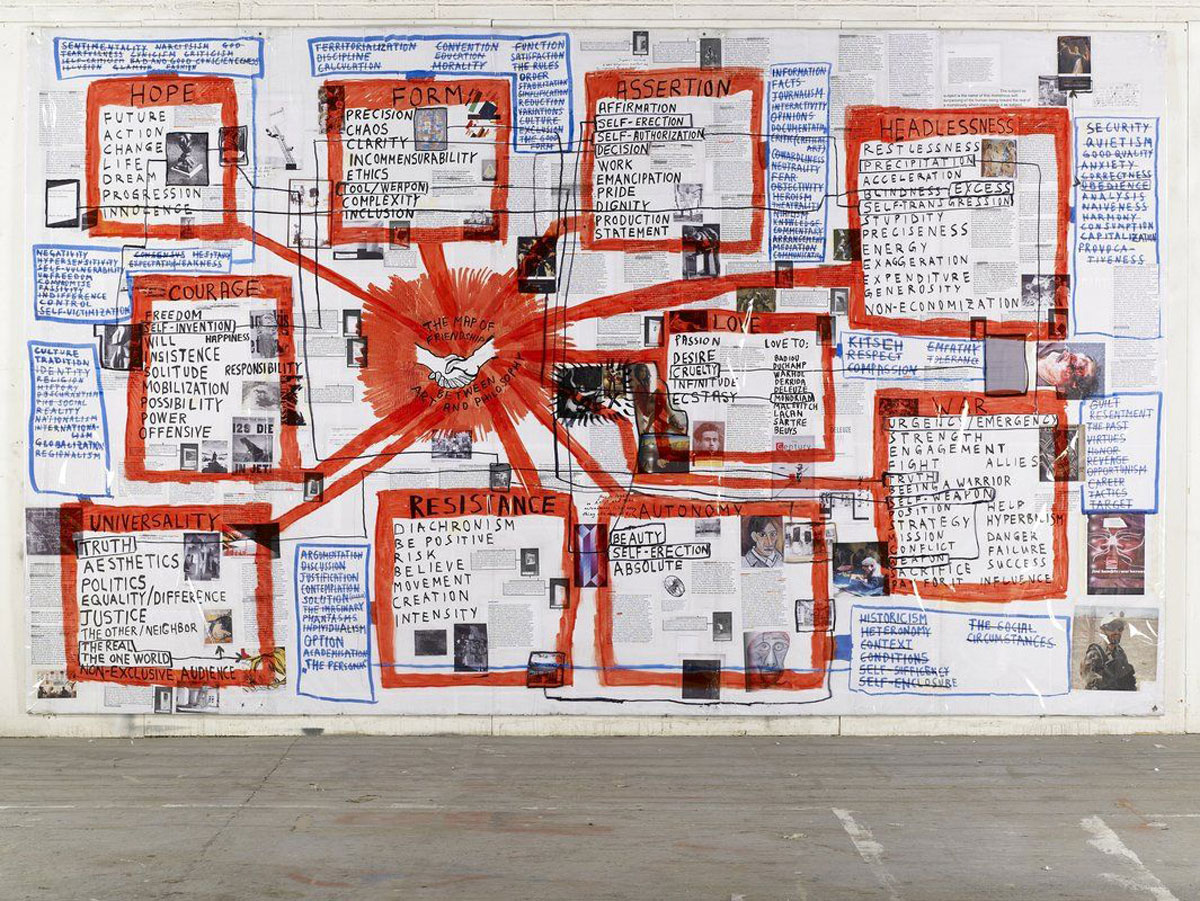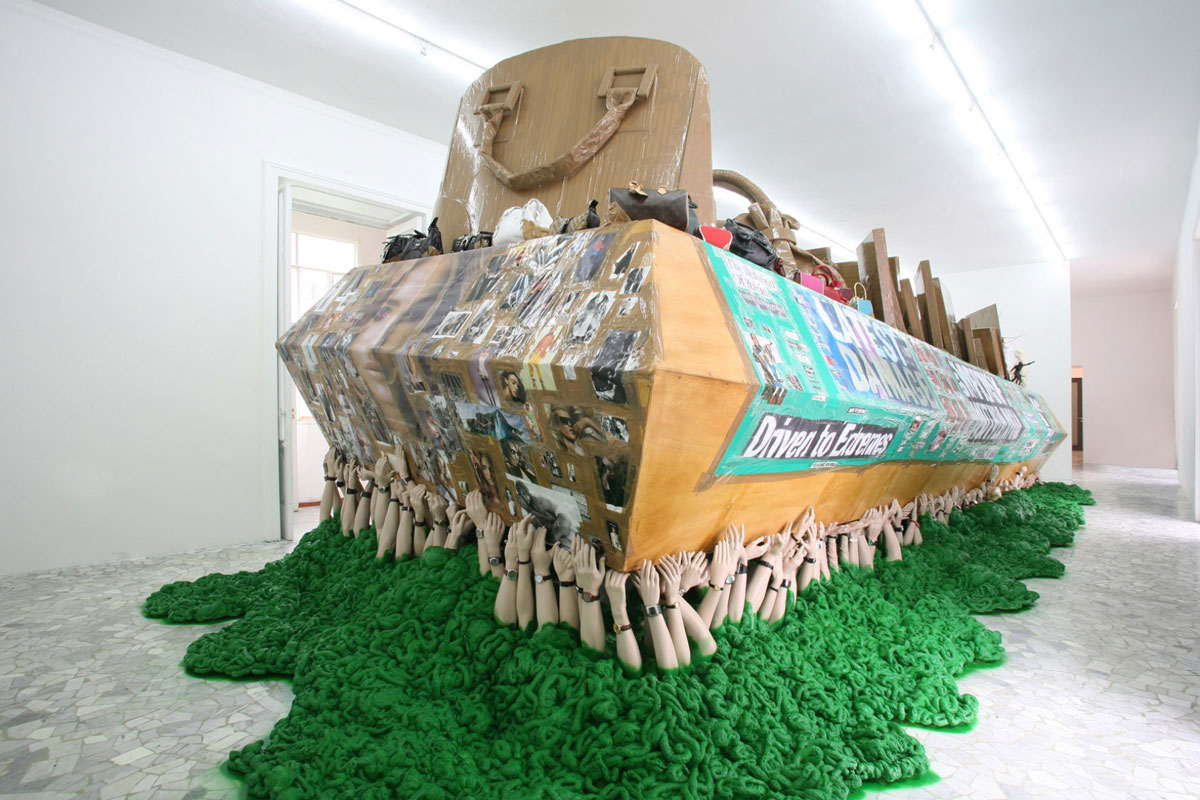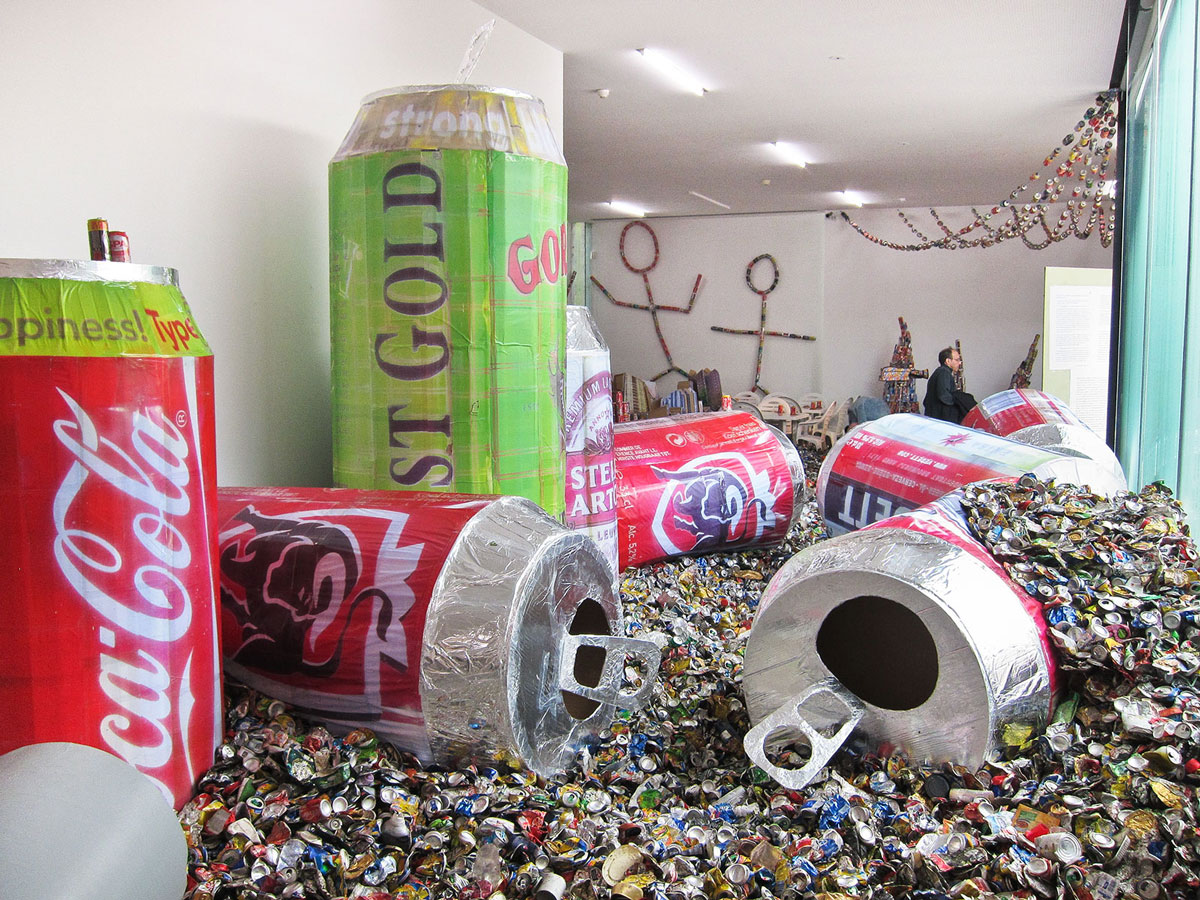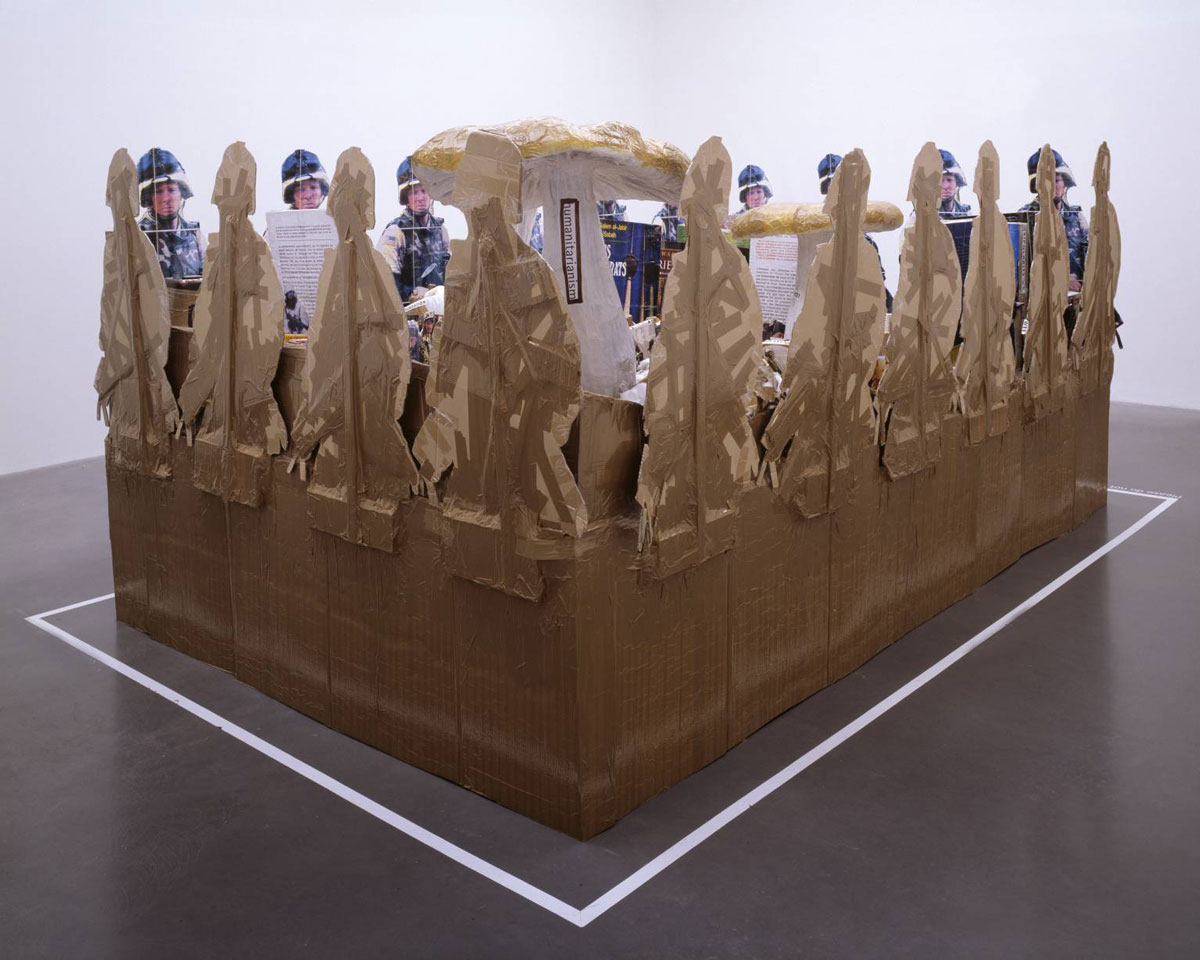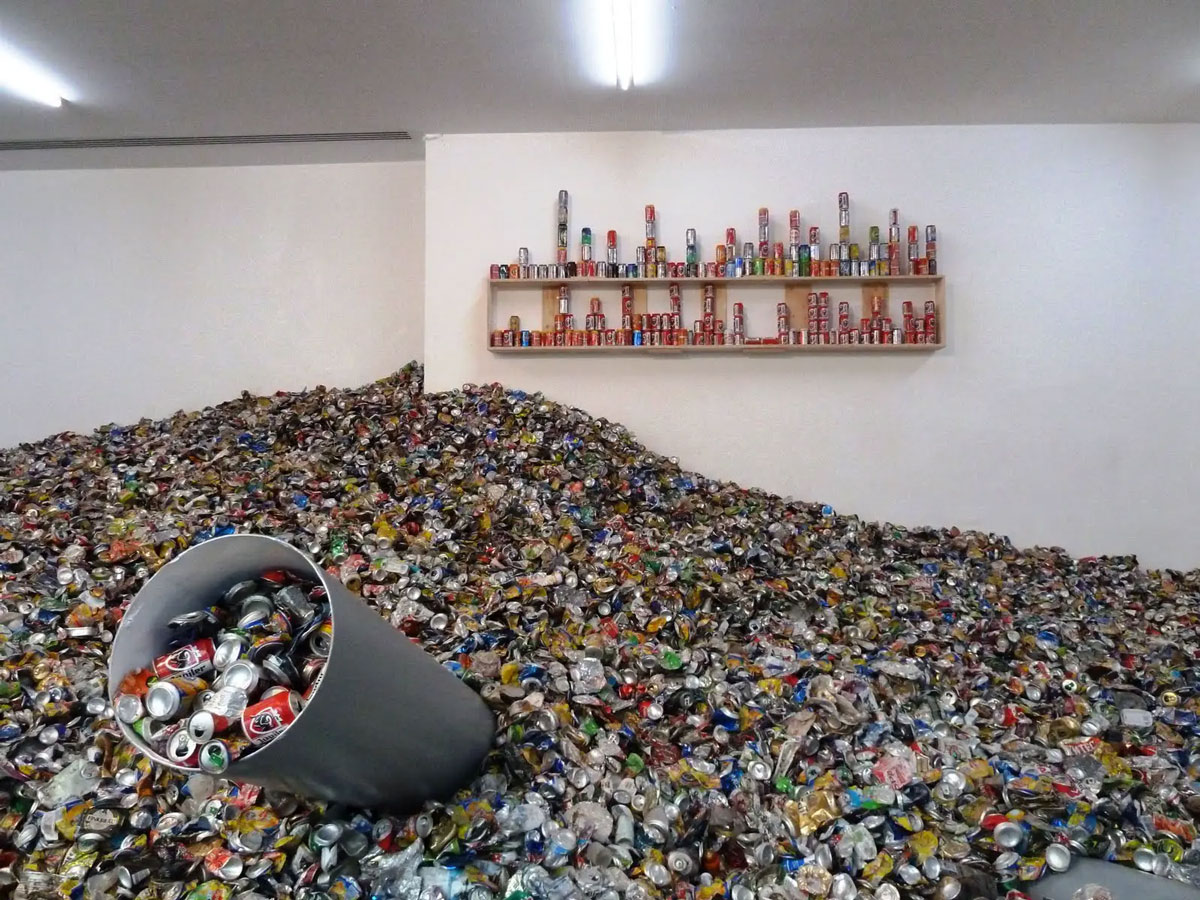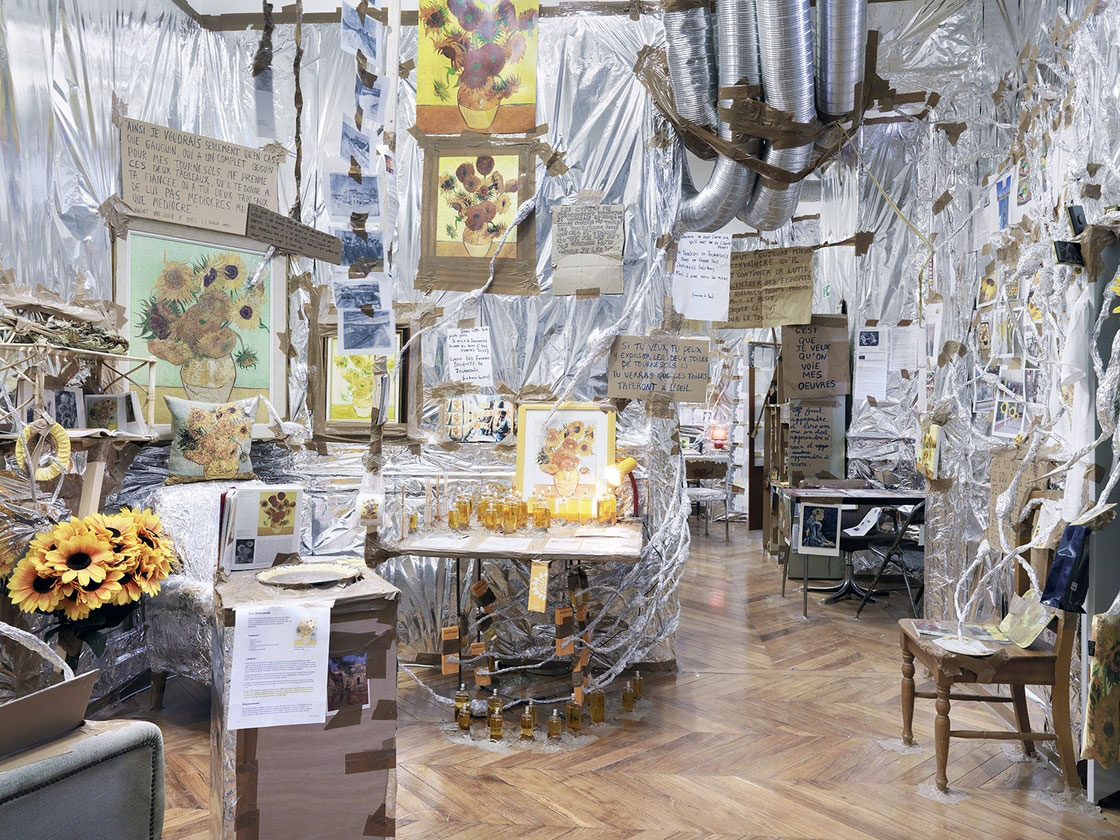TRACES: Thomas Hirschhorn
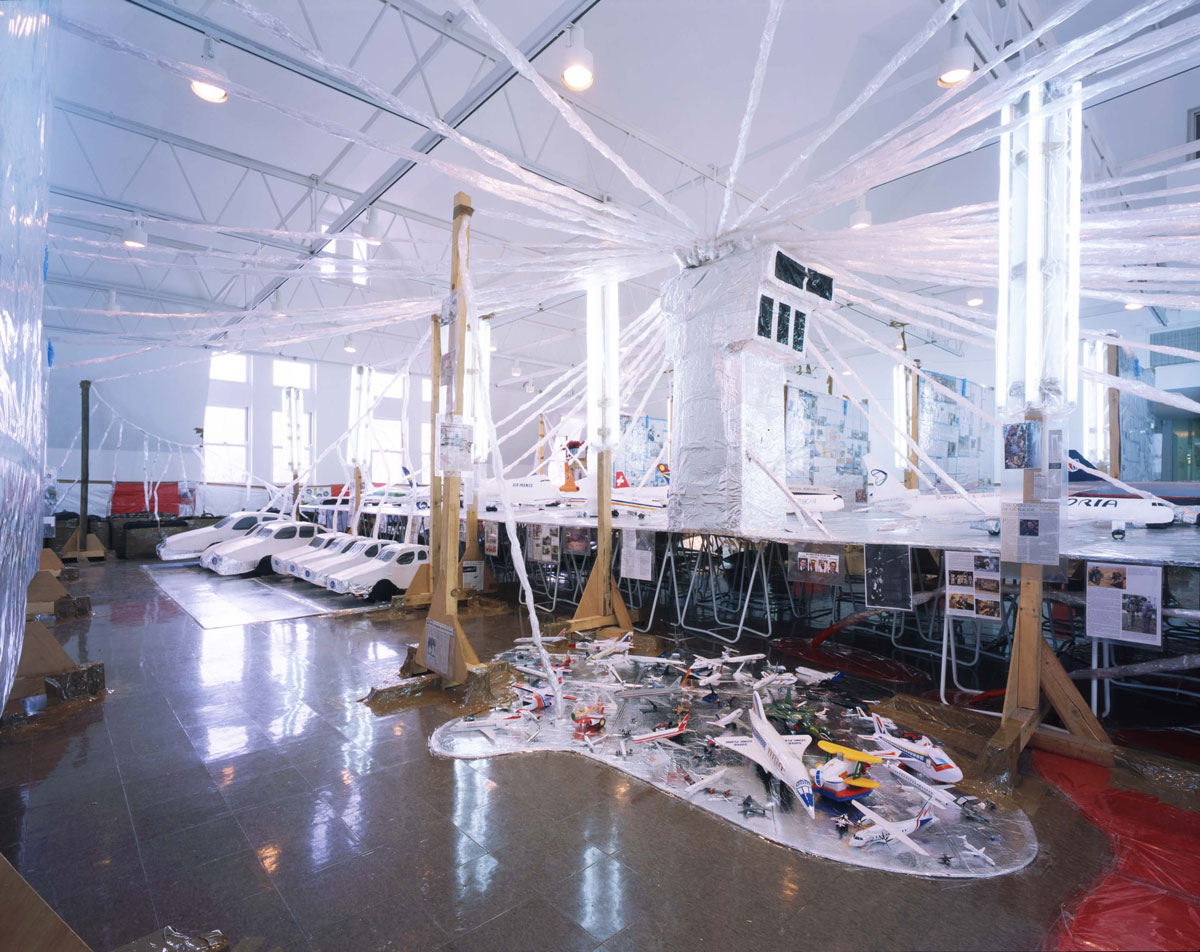 Today is the occasion to bear in mind Thomas Hirschhorn (16/5/1957- ), he uses everyday and found materials to create a dystopian reality. Implicated in Hirschhorn’s work, viewers are obliged to consume and reflect upon that which they may have hitherto been able to ignore in their daily lives. This column is a tribute to artists, living or dead, who have left their mark in Contemporary Art. Through documents or interviews, starting with: moments and memories, we reveal out from the past-unknown sides of big personalities, who left their indelible traces in time and history…
Today is the occasion to bear in mind Thomas Hirschhorn (16/5/1957- ), he uses everyday and found materials to create a dystopian reality. Implicated in Hirschhorn’s work, viewers are obliged to consume and reflect upon that which they may have hitherto been able to ignore in their daily lives. This column is a tribute to artists, living or dead, who have left their mark in Contemporary Art. Through documents or interviews, starting with: moments and memories, we reveal out from the past-unknown sides of big personalities, who left their indelible traces in time and history…
By Dimitris Lempesis
 Thomas Hirschhorn was born in Bern, Switzerland, he attended the School of Applied Arts in Zurich, where he was inspired by Beuys and Warhol exhibitions. In the 1980s, Thomas Hirschhorn came to Paris to take part in the Grapus collective as a graphic designer, because he was impressed by the way their graphic work was politically engaged. Although he and the Grapus people were good friends, working with them wasn’t what he wanted to do. He didn’t want to work for clients, he wanted to create for himself. In 1991, he decided to leave the world of graphic design in favor of being an artist. During the long years that followed, he developed his own visual research based on the principle of Collage. In the beginning, he claimed these as ‘Graphic design from myself,’ but was not successful until he decided to position his Collage-work in the field of art and art history. He then started to create the hyper saturated works he is known for today that incorporate sculpted forms, words and phrases, free-standing or wall mounted collages, and video sequences. He uses common materials such as cardboard, foil, duct tape, magazines, plywood, and plastic wrap. He describes his choice to use everyday materials in his work as “political” and that he only uses materials that are “universal, economic, inclusive, and don’t bear any plus-value”. All of his works are accompanied by written statements that include his observations, motivations and intentions. He has said that he is interested in the “hard core of reality”, without illusions, and has displayed a strong commitment to his work and role as an artist. He described working and production as “necessary”, discounting anyone who encourages him to not work hard, and says “I want to be overgiving in my work”. Hirschhorn is also very adamant about not being a political artist, but creates “art in a political way”. In 2000, Hirschhorn exhibited Jumbo Spoons and Big Cake at the Art Institute of Chicago to complement the exhibit at The Renaissance Society at the University of Chicago, Flugplatz Welt/World Airport. The 12 Jumbo Spoons are memorials to individuals that he associates with failed utopian ideals. The Big Cake represents excess and violence. World Airport (1999), a clutter of cellophane, tape, partitions, lighting strands, tarmac, televisions, planes, cars, and luggage, represented the artists inability to comprehend the world. For his piece Cavemanman (2002), he transformed a gallery space into a cave using wood, cardboard, and tape and put various philosophical and pop culture symbols throughout it. Gramsci Monument (2013), named after the Italian thinker Antonio Gramsci, was the first project that Hirschhorn built in the United States. It was a site-specific, participatory sculpture at the Forest Houses complex in the Bronx, New York. It was the fourth and final such work in a series he began many years ago dedicated to his favorite philosophers, following a monument dedicated to Baruch Spinoza in Amsterdam in 1999, one to Gilles Deleuze in Avignon, France, in 2000, and a third to Georges Bataille in Kassel, in 2002. From the beginning, the monuments have been planned and constructed in housing projects occupied mostly by the poor and working class, with their agreement and help. In 2021 his exhibition “Community of Fragments” turned GL STRAND into an anti-architectural space. The exhibition has been created as a site-specific free access project on two floors, and has transformed the whole architecture of the museum. Right from the main stairway that leads up through the gallery, Hirschhorn will let the fake cave or abandoned mine take over from floor to ceiling, so we are literally moving around on the premises of a destruction. In the exhibition the artist pays tribute to Antonio Gramsci and Simone Weil’s works for their fragmented nature, because both of them, due to life circumstances, never published an assembled book. Both of them left us “beautiful notebooks, which in their fragmented writing, are tools to reconstruct the world”. For a number of years Thomas Hirschhorn has worked with the ruin motif as a specific physical space, and he explores the concepts of destruction that are associated with it. The ruin involves not only destruction, but optimism and hope. The ruin means an opportunity to start over and build up anew. “Community of Fragments” seems like a classic Hirschhorn space, a maze and nest of fully built-out environments in materials anyone can get anywhere. It contains the noise of absurdism and surrealism, with sofas wrapped in packing tape, the homespun construction of children’s play or a no-budget monster movie, and the frenzy of the automatic.
Thomas Hirschhorn was born in Bern, Switzerland, he attended the School of Applied Arts in Zurich, where he was inspired by Beuys and Warhol exhibitions. In the 1980s, Thomas Hirschhorn came to Paris to take part in the Grapus collective as a graphic designer, because he was impressed by the way their graphic work was politically engaged. Although he and the Grapus people were good friends, working with them wasn’t what he wanted to do. He didn’t want to work for clients, he wanted to create for himself. In 1991, he decided to leave the world of graphic design in favor of being an artist. During the long years that followed, he developed his own visual research based on the principle of Collage. In the beginning, he claimed these as ‘Graphic design from myself,’ but was not successful until he decided to position his Collage-work in the field of art and art history. He then started to create the hyper saturated works he is known for today that incorporate sculpted forms, words and phrases, free-standing or wall mounted collages, and video sequences. He uses common materials such as cardboard, foil, duct tape, magazines, plywood, and plastic wrap. He describes his choice to use everyday materials in his work as “political” and that he only uses materials that are “universal, economic, inclusive, and don’t bear any plus-value”. All of his works are accompanied by written statements that include his observations, motivations and intentions. He has said that he is interested in the “hard core of reality”, without illusions, and has displayed a strong commitment to his work and role as an artist. He described working and production as “necessary”, discounting anyone who encourages him to not work hard, and says “I want to be overgiving in my work”. Hirschhorn is also very adamant about not being a political artist, but creates “art in a political way”. In 2000, Hirschhorn exhibited Jumbo Spoons and Big Cake at the Art Institute of Chicago to complement the exhibit at The Renaissance Society at the University of Chicago, Flugplatz Welt/World Airport. The 12 Jumbo Spoons are memorials to individuals that he associates with failed utopian ideals. The Big Cake represents excess and violence. World Airport (1999), a clutter of cellophane, tape, partitions, lighting strands, tarmac, televisions, planes, cars, and luggage, represented the artists inability to comprehend the world. For his piece Cavemanman (2002), he transformed a gallery space into a cave using wood, cardboard, and tape and put various philosophical and pop culture symbols throughout it. Gramsci Monument (2013), named after the Italian thinker Antonio Gramsci, was the first project that Hirschhorn built in the United States. It was a site-specific, participatory sculpture at the Forest Houses complex in the Bronx, New York. It was the fourth and final such work in a series he began many years ago dedicated to his favorite philosophers, following a monument dedicated to Baruch Spinoza in Amsterdam in 1999, one to Gilles Deleuze in Avignon, France, in 2000, and a third to Georges Bataille in Kassel, in 2002. From the beginning, the monuments have been planned and constructed in housing projects occupied mostly by the poor and working class, with their agreement and help. In 2021 his exhibition “Community of Fragments” turned GL STRAND into an anti-architectural space. The exhibition has been created as a site-specific free access project on two floors, and has transformed the whole architecture of the museum. Right from the main stairway that leads up through the gallery, Hirschhorn will let the fake cave or abandoned mine take over from floor to ceiling, so we are literally moving around on the premises of a destruction. In the exhibition the artist pays tribute to Antonio Gramsci and Simone Weil’s works for their fragmented nature, because both of them, due to life circumstances, never published an assembled book. Both of them left us “beautiful notebooks, which in their fragmented writing, are tools to reconstruct the world”. For a number of years Thomas Hirschhorn has worked with the ruin motif as a specific physical space, and he explores the concepts of destruction that are associated with it. The ruin involves not only destruction, but optimism and hope. The ruin means an opportunity to start over and build up anew. “Community of Fragments” seems like a classic Hirschhorn space, a maze and nest of fully built-out environments in materials anyone can get anywhere. It contains the noise of absurdism and surrealism, with sofas wrapped in packing tape, the homespun construction of children’s play or a no-budget monster movie, and the frenzy of the automatic.

